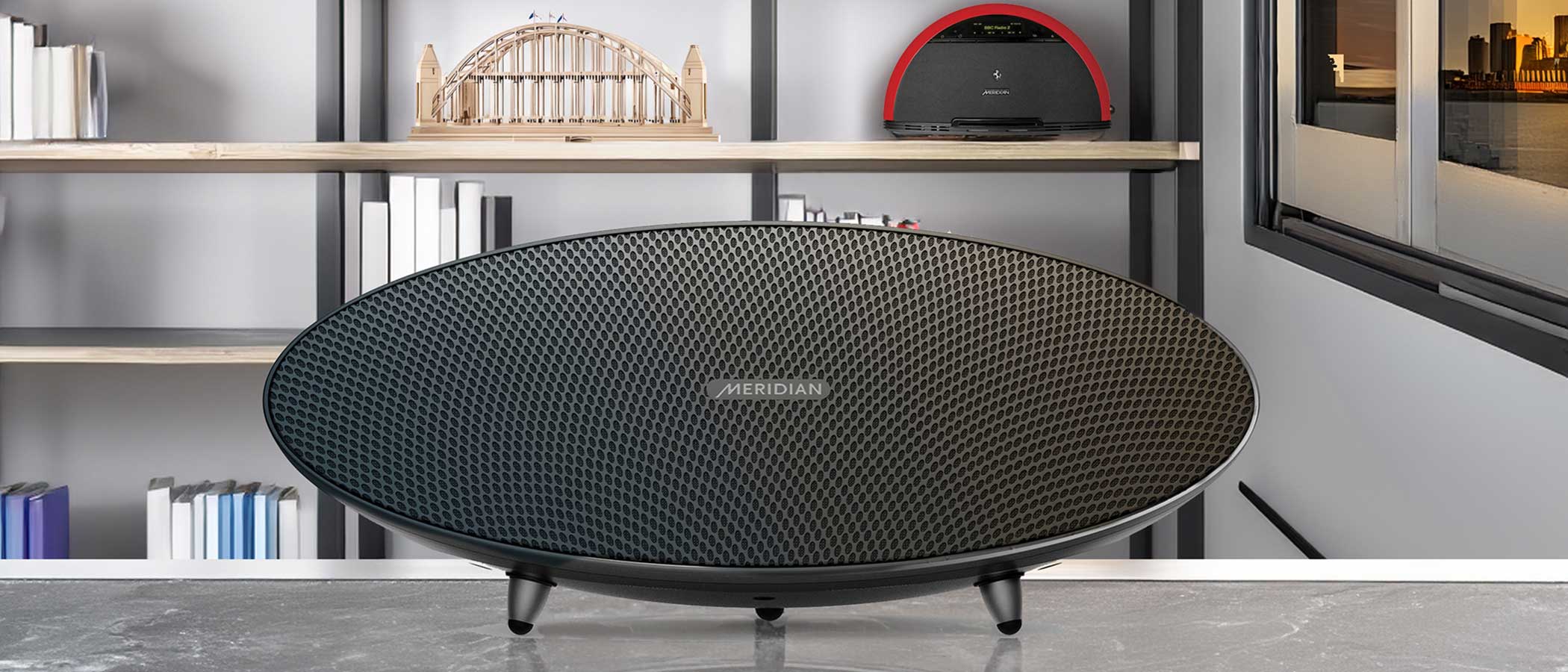Sound+Image Verdict
This is one of the best small wireless speakers we’ve heard, probably the best of its size that money can buy, but the money required to do so does seem an awful lot, for what you get.
Pros
- +
Best-sounding small speaker ever?
- +
Good streaming options
- +
USB-C and optical playback
Cons
- -
Remote control costs A$899 extra
- -
On top of a A$4999 price
Why you can trust What Hi-Fi?
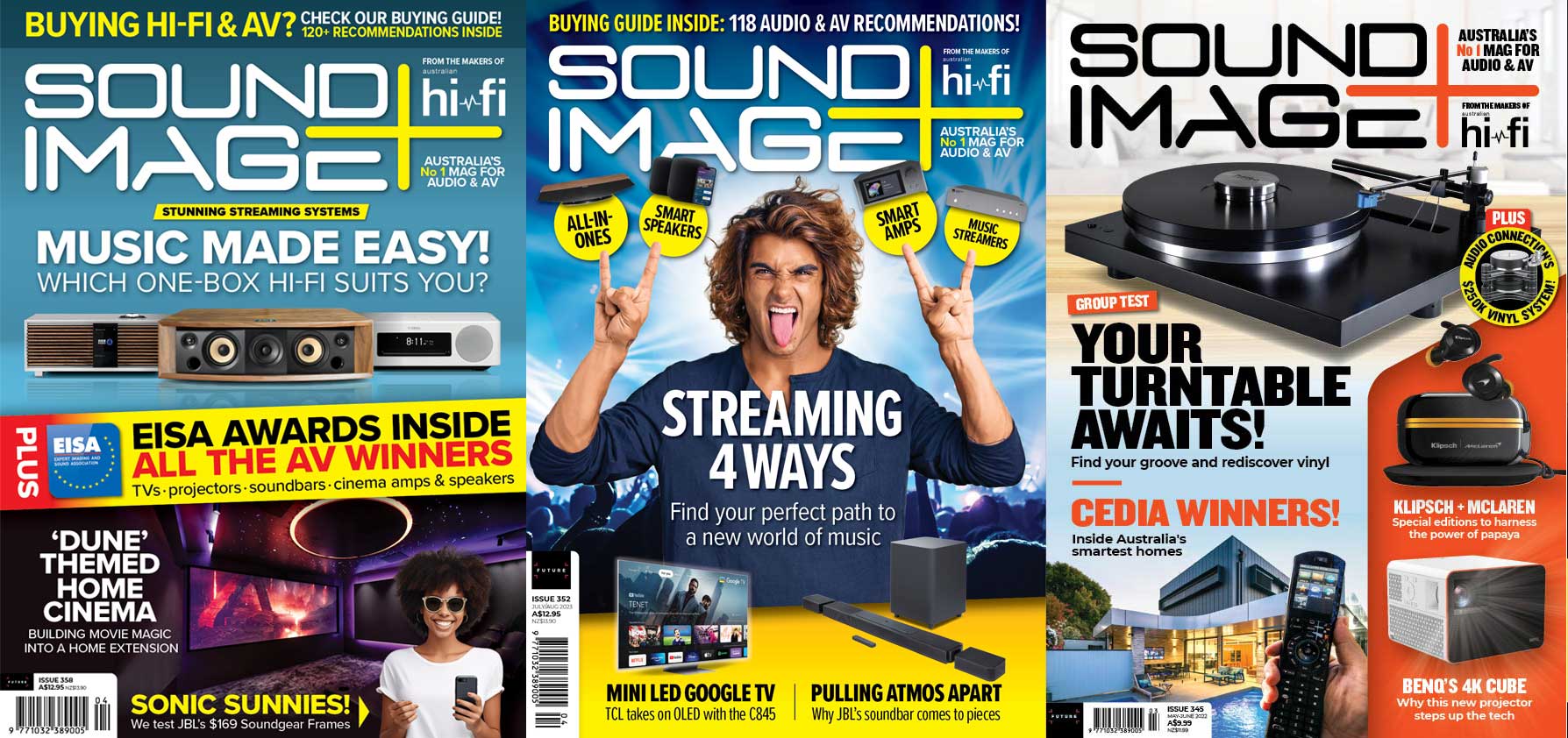
This review originally appeared in Sound+Image magazine, Australian sister publication to What Hi-Fi?. Click here for more information on Sound+Image, including digital editions and details on how you can subscribe.
Meridian’s all-new Ellipse is announced as the company’s first wireless speaker system – although we still remember the Meridian F80 back in 2006, in its variety of bright Ferrari colours which led to Stereophile’s memorable description that “it resembles half of a very large M&M”.
But the F80 wasn’t wireless, other than receiving radio; instead it played DVDs, in addition to CDs, and rather shocked people by being a compact sound system priced in Australia around A$5000, back in the days when that seemed ridiculous.
By a non-inflationary-adjusted coincidence, the new Ellipse is also arriving around A$5000 (£1900), it lands today in a market where high-end all-in-one systems are not such a rarity; the price of such luxury continues to nudge upwards, with notably Marantz just launching two models, both higher in price even than this one.
We might say, however, that we have never seen a A$5000 all-in-one system which is this small. This new Ellipse is surprisingly dinky at 41cm wide, its elliptical curves making it look even smaller, so that as you release it from the soft bag in which it is packed, you might at first be wondering exactly where your money has gone.
But don’t worry; here’s an early spoiler alert: we think Meridian has spent your money on enabling such a large box to create remarkably good sound.
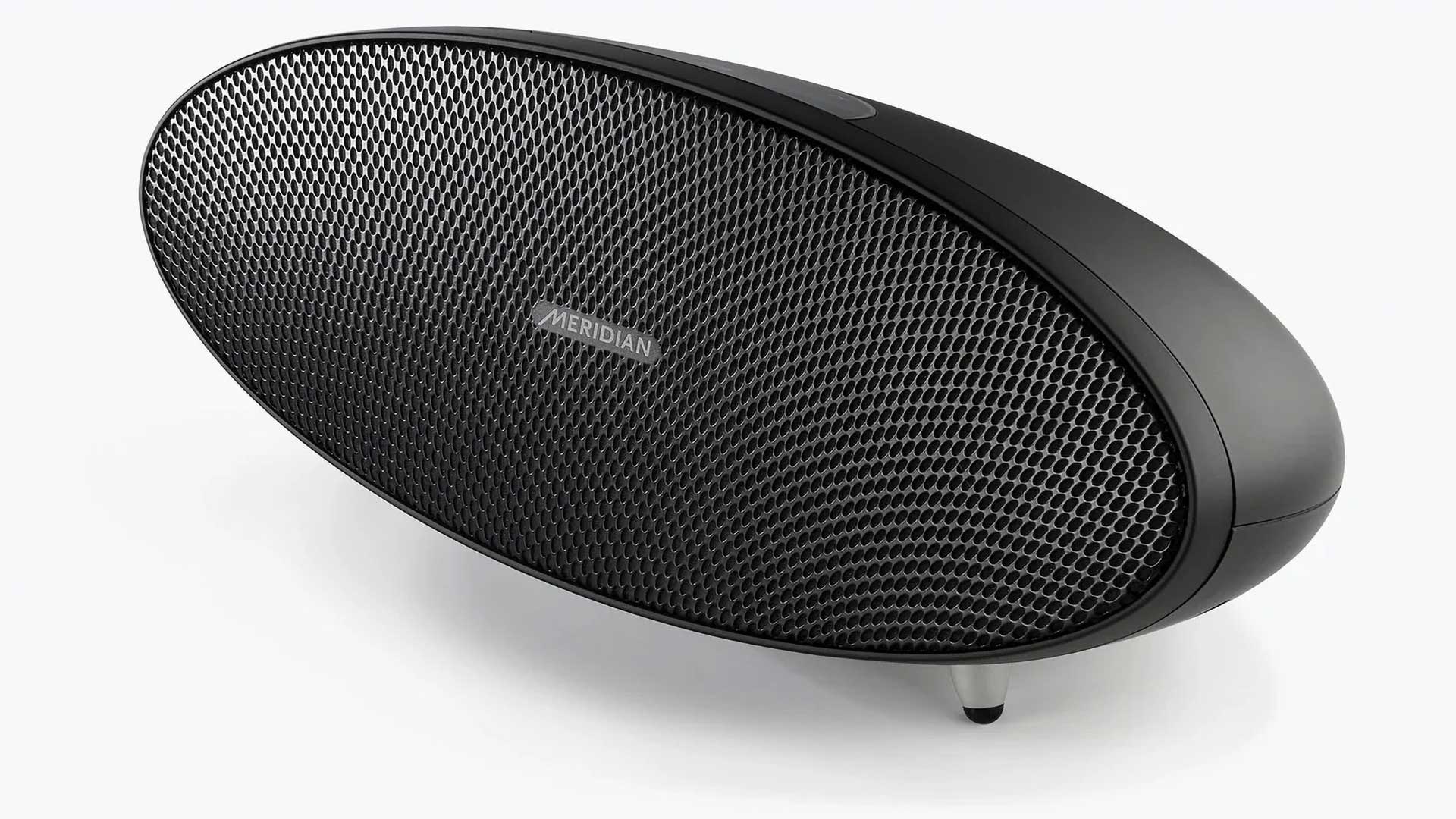
Build & facilities
It’s clearly well-built, the Ellipse, although we would say the same of Bowers & Wilkins’ famous similarly shaped and sized Zeppelin wireless speaker, which in its standard wireless iteration sells down at £549 or AU$$999, so less than a fifth of the Meridian’s price in Australia.
The Meridian also brings fewer drivers than the Zeppelin: just three, with two 90mm polypropylene drivers within the Ellipse’s outer curves, and between them a wide ‘racetrack’ bass driver some 15cm wide and 10cm high, also specified as polypropylene. There doesn’t seem to be a port from the inside to the outside, so we think this is a sealed-box enclosure, a brave call for such a small box if so, as ports generally increase efficiency. But you can be sure it’s well considered, the Ellipse being a graduate of the Meridian’s ‘Extreme Engineering Programme’, an effort of some eight years to re-imagine each element of Meridian’s system approach, both software and hardware, from the company’s full-size big-boy speakers down to the dinky Ellipse, which is the first Meridian speaker to feature the latest R2 electronics platform, a compact version of the R1 platform, where much clever stuff is taken care of by Meridian’s digital signal processing (DSP): the same signal-enhancing developments found in the AU$160k DSP8000XE speakers (and slightly more ‘affordable’ DSP9s).
So what’s going on beneath the grille here?
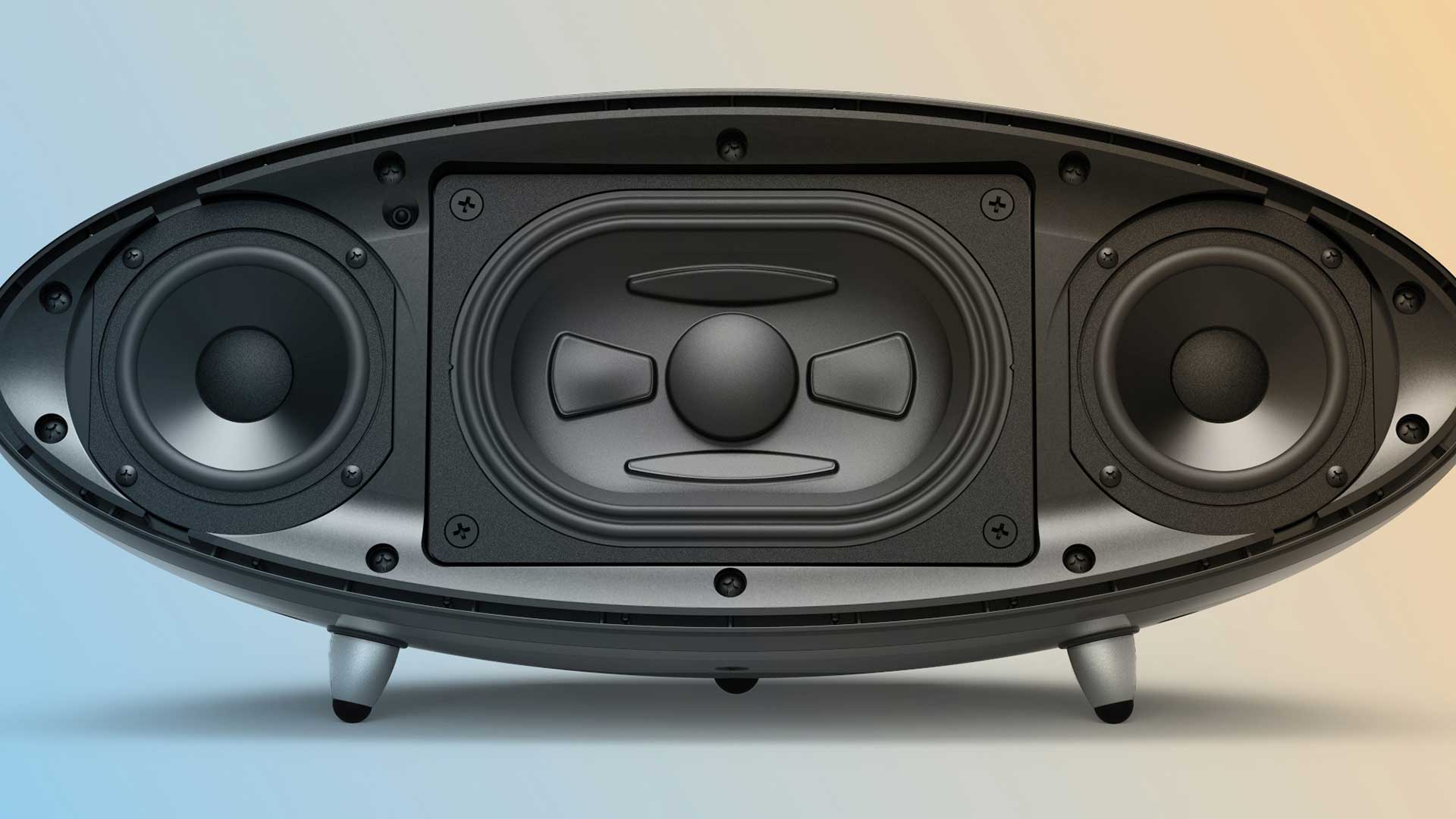
You can’t get the front grille off easily, but the cut-away images from Meridian (above) show little or no angling of baffles, no side- or rear-firing tweeters – nothing which might be doing something clever to expand the sound field from the minimal dimensions on offer: the whole layout seems profoundly simple, which of course may be no bad thing. Tricksy spatial stuff can make things sound bigger, but usually at the cost of sounding less pure, and in the long term, purity is almost always the better option.
That doesn’t prevent Meridian getting pretty tricksy with the digital processing inside the Ellipse. DSP is a Meridian trump card: it has been making ‘digital speakers’ longer than anyone else (35th anniversary, in fact, of the groundbreaking D600 in 1989), and is expert in the transport and tailoring signals, and in the control of power to specific drivers for unprecedented clarity. Here the big racetrack driver gets 30W of Class-D power, the full-rangers 25W Class-D each. Each operates within its own internal chamber.
As for granular control of these software algorithms, the company here has an app for that, as we’ll see, letting you make adjustments for such esoteric variables as ‘’Image Focus’, ‘Free-Q’, ‘Image Elevation’, and what turns out to be the most drastic of the lot: ‘Bass & Space’.
The app also gets you handles more mundane tasks such as getting the Ellipse onto Wi-Fi, if you can’t give its Ethernet socket a cable connection. Either networking method will bring the benefits of Meridian’s latest (and updateable) streaming platform, which can receive from devices via AirPlay 2 or Google Cast, or natively (direct streaming from the internet under the control of your device) with either Tidal Connect or Spotify Connect.
There’s also Bluetooth available, and in the manual Meridian makes the point that if all you need is Bluetooth, then the Ellipse is ready to go out of the box. But Bluetooth, although version 5.2, appears limited to SBC and AAC codecs, with no third-party aptX or LDAC for higher bit-rates, so that you’d be well advised not to use it merely as the world’s most expensive Bluetooth speaker.
There are also a couple of physical inputs: USB-C for wired playback of 192kHz/24-bit audio, plus a combo analogue minijack/mini-optical connection, which might play from a TV perhaps. If using the analogue minijack, the signal is sampled at 24-bit/88.2kHz for subsequent processing.
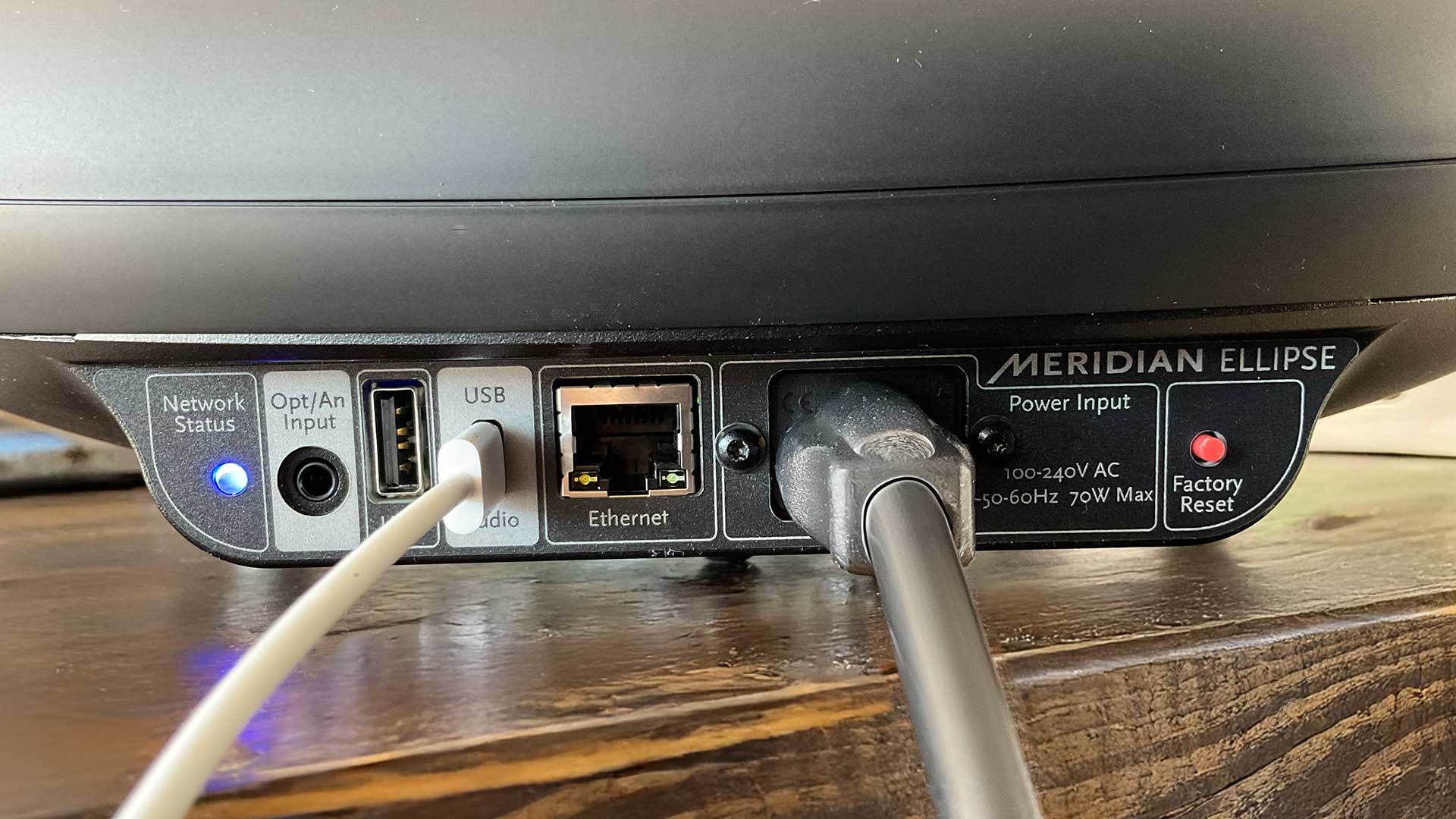
Listening sessions
We can’t launch straight into our listening impressions of the Ellipse, because how it sounded was highly variable, depending on which of Meridian’s “technologies” we activated via the app.
When playing music, the app provides access to three main screens. ‘Control’ gives you a giant volume control (gigantic on a tablet, slightly less vast on a phone). ‘Playing’ gives a nice clean screen with information and key controls; touch the track and it opens to full screen, which is a nice accompaniment to a music session.
Lastly there is a ‘Menu’ screen, with audio controls, such as Treble and Bass. But you should go down to ‘Free-Q’ first, since you can’t turn this off; this is Meridian’s tuning for different placements. ‘Free’ (for freestanding) gets the most bass; the remaining ‘Wall’, ‘Shelf’ and ‘Corner’ get varying lighter presentations. You might then adjust the treble and bass to taste.
The ‘Image Focus’ adjustment has a centre position, and turned out to be effectively a balance slider, though Meridian’s ‘focusing’ no doubt uses a more complex algorithm than simple left/right fading, and may ‘beam’ the audio one way or the other. In most circumstances it would be rather easier just to turn the Ellipse sideways.
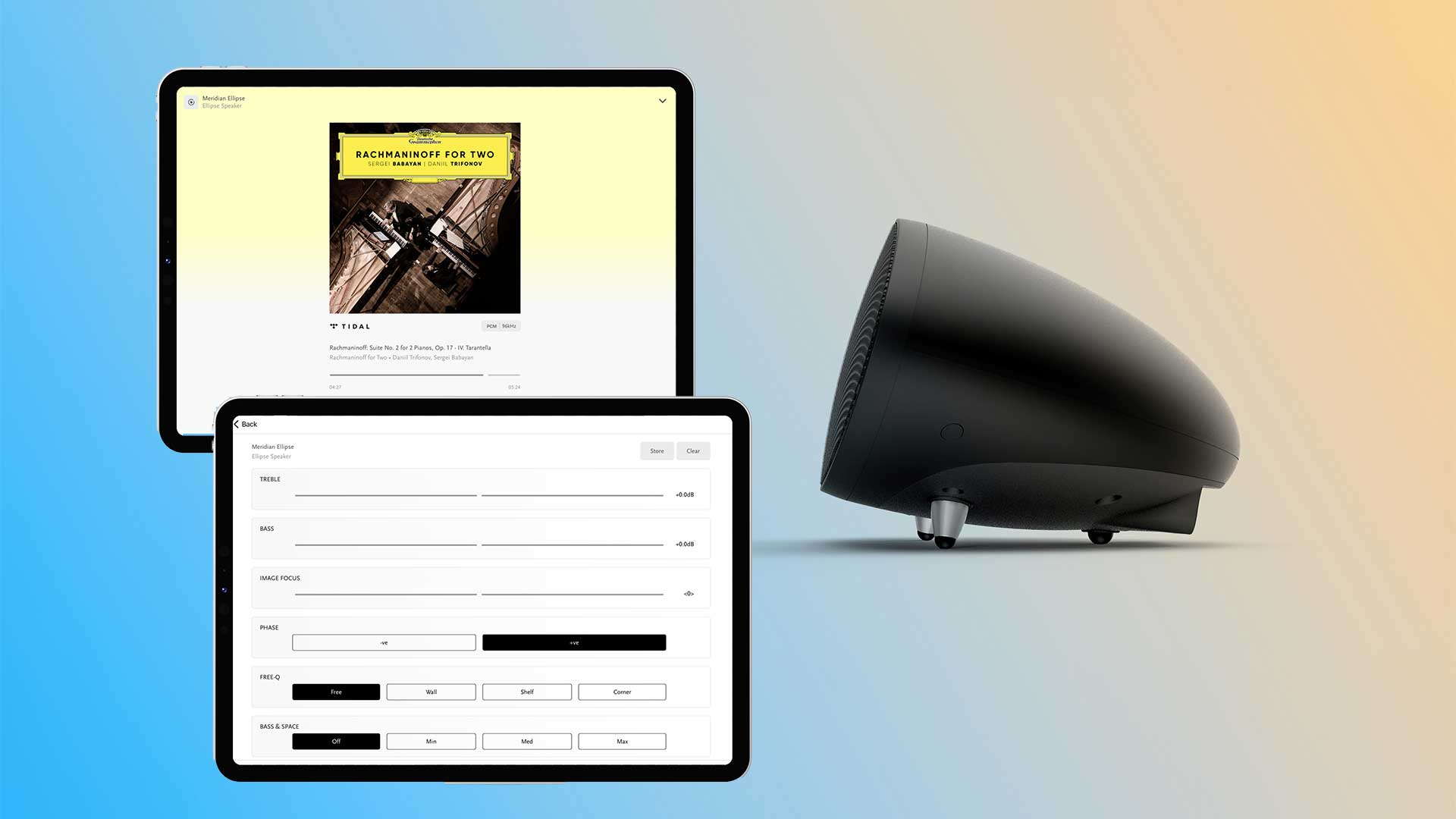
We couldn’t imagine what ‘Image Elevation’ is supposed to achieve on a two-channel system, but the manual says it is to “adjust the height of the sound image to suit the listening position” – so algorithmically altering the axis, it seems. Listening to it on axis, a higher ‘Elevation’ setting significantly lifted the highest frequencies, so that Jon Anderson’s vocal on I’ve Seen All Good People became hissy and spitty. So we left this off as well, and instead made sure to move either ourselves or the Ellipse to get the best sound.
Meridian’s online help says that these four settings are all to adapt the sound from the Ellipse “to suit its location in the room”. But the last of them, ‘Bass & Space’, is wildly more influential than that, and you may want to play with it regularly during music listening, as did we. The manual says it “adjusts the perceived width of the soundstage” but use of it changed everything, from tone and stereo separation to bass levels and overall volume. Sometimes (Massachusetts by the Bee Gees from Tidal, for example), the max ‘Bass & Space’ setting (of three) generated awful phasey effects as we moved around the speaker, echoey vocal in some locations, clear in others.
Yet superficially ‘Bass & Space’ adds a whole extra dimension to the sound, an excitement and apparent size. The left-channel guitar on Come Together was thrown out wide and huge. Being also fundamentally louder as well, by as much as 10dB according to our little meter, many people will go ‘wow’ and leave it on. But besides the deleterious audio effects, we found it also limited the level to which we could raise the Ellipse – it would get shoutier earlier. As the ultimate volume level available is one of the Ellipse’s big selling points, you’ll take best advantage of that by dropping the ‘Bass & Space’ and instead just turning it up.
But horses for courses. Playing Fleetwood Mac’s Songbird at just beyond moderate level, one dose of Bass & Space really made the hall acoustic and the reverb around the vocal far more apparent, and more emotive as a result. However you want it to sound, Meridian’s app allows you to tweak it to your preference.
So we continued, tweaking via the app as we went. Applying Bass & Space to the recent DG close-miked ‘Rachmaninov For Two’ release (Daniil Trifonov, Sergei Babayan) there was thrilling and large-scale impact from the Ellipse, slamming and stabbing out of piano notes while slinging them also wide in the soundstage. Yet softer mid-frequency runs were being drowned out behind all the exaggerated action, and this was something else clarified properly by clearing the effect and simply raising the volume.
There are even more menus under ‘Configuration’, though going here seems to detach the Ellipse from music streams, and it’s more for set-up than tweaking.
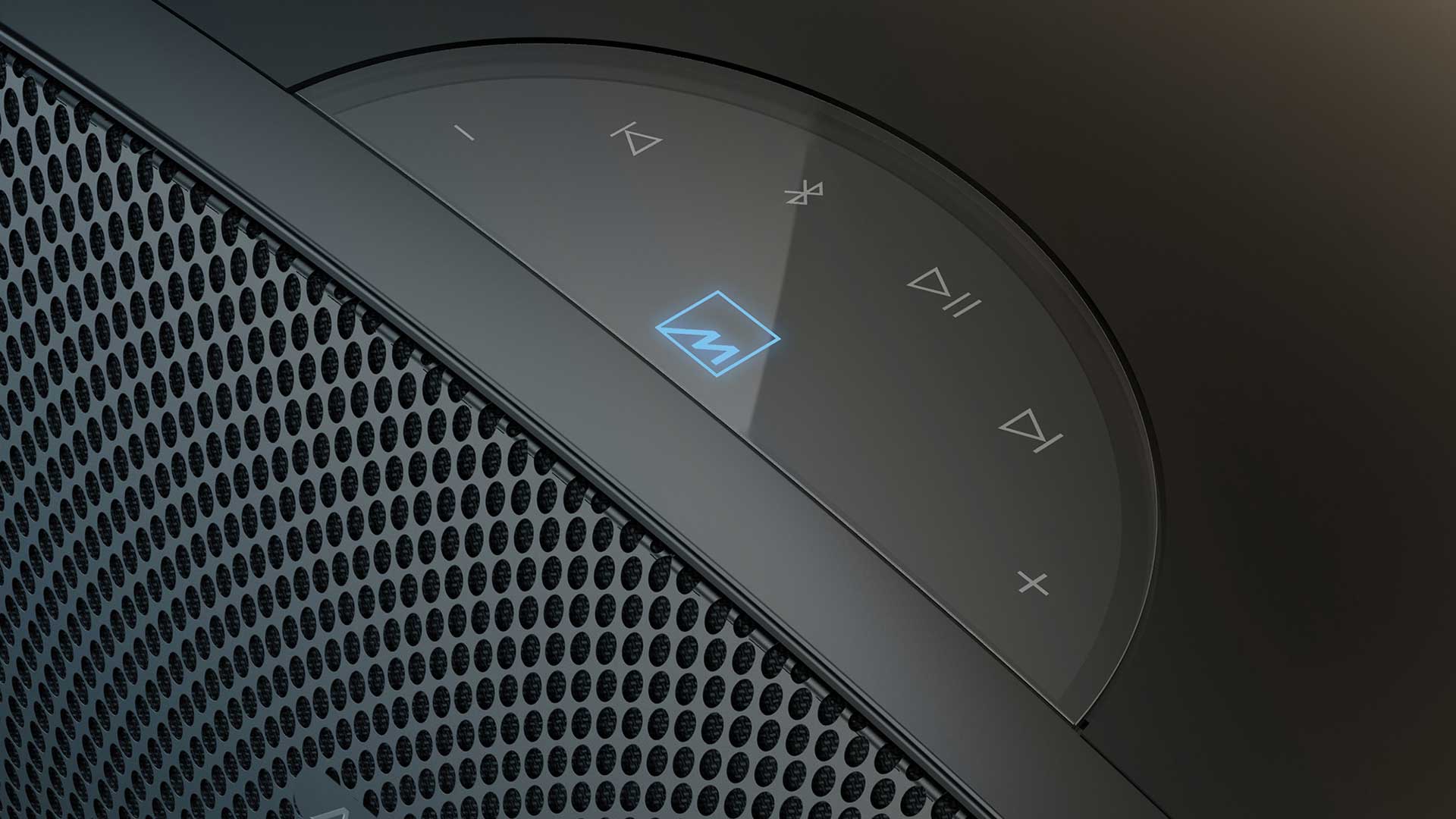
Despite being dramatic and powerful on request, the Meridian delivered a good balance for everyday listening as well: full but not boomy, clear but not edgy. A 96kHz high-res stream of Elton John’s Funeral For A Friend/Love Lies Bleeding punched out sounding as fresh as a daisy. Something modern, atmospheric and bass-tastic like GoGo Penguin’s Raven just begged to be turned up, releasing the depth yet speed of its acoustic bass, the solid thump to the kick drum, even the stereo spread of the piano, a remarkable thing to note given the unit’s physical limitations on spread.
The Ellipse wouldn’t play from Roon during its stay with us: ‘certification not yet completed’ was the message; not their fault, we’d guess, as they seem not alone in certification delays since Roon moved to Harman international.
Don’t miss the USB-C input option which allows you to spurt tunes directly from your laptop. We ran a double-ended USB-C cable from our Macbook Pro to the Ellipse: it appeared as a sound device, we pointed Tidal to the main output, and out the music came. We reset our Audio/MIDI to 24-bit/96kHz to match Tidal’s high-res FLACs (no MQAs any more, another Meridian-born technology), and via this path the Ellipse sounded at its absolute most pure. Fleetwood Mac is hard to get wrong, of course, but Go Your Own Way charged cleanly and enthusiastically from the Ellipse via USB-C; if we were tempted to notch up the bass we were discouraged after doing so, still preferring the clarity of flat settings over even that basic EQ adjustment.
This USB-C playback makes the Ellipse great for a desktop scenario, especially as you’ll be able to reach the volume controls.
With the algorithms kept low, podcast voices were also well rendered as realistic voices: male voices rich, female voices full, both kept in check and free from sputter.
The same talents, along with musical strengths, could make it rather a good TV speaker via optical. Dialogue came through strongly, and raging soundtracks didn’t faze it one bit. The problem here is that your TV remote won’t control the volume as it might if the Ellipse had HDMI ARC instead of optical – so how will you control the volume when you’re watching telly?
Indeed, how do you control the volume at any time? What do you do when the phone rings and the music is blasting out?
You may have app control here, but each time we started Meridian’s app, even from standby, it took up to five seconds to find and reconnect with the Ellipse so we could control it – waaaaaay too long if you’re trying to mute it because the phone is ringing, and of course the app may get in the way of your call as well. And sometimes for us the app would detach entirely, declaring no products on the network, even while the Ellipse next to it was streaming via Tidal Connect. That left us no control even for volume then, except via the top panel of the Ellipse itself.
Because something else the Ellipse has in common with the Bowers & Wilkins Zeppelin is that neither wireless player comes with a remote control, something we think is an absurd and user-unfriendly omission, especially given the Meridian’s A$4999 (£1900) price.
Meridian instead gives a number of options for control: the app (too slow), the Meridian top panel (too far), third-party apps (still apps), third-party custom installation or buying Meridian’s compatible but optional MSR2 remote which – wait for it – costs A$899 (£325).
But if money isn’t a priority, perhaps that’s OK. We’d really like just a simple remote, as we do with every wireless speaker; simple two-button volume would do.
Two other options suggested to us by a Meridian rep when we raised this issue at the recent UK Hi-Fi Show Live: keep a separate smart device, perhaps an old phone, as a dedicated remote for the Meridian. Or even persuade your Meridian dealer to let you copy the main commands into a cheap universal remote control. But neither solution is ideal, and you could tell that even the Meridian rep wished that the Ellipse came with a simple remote.
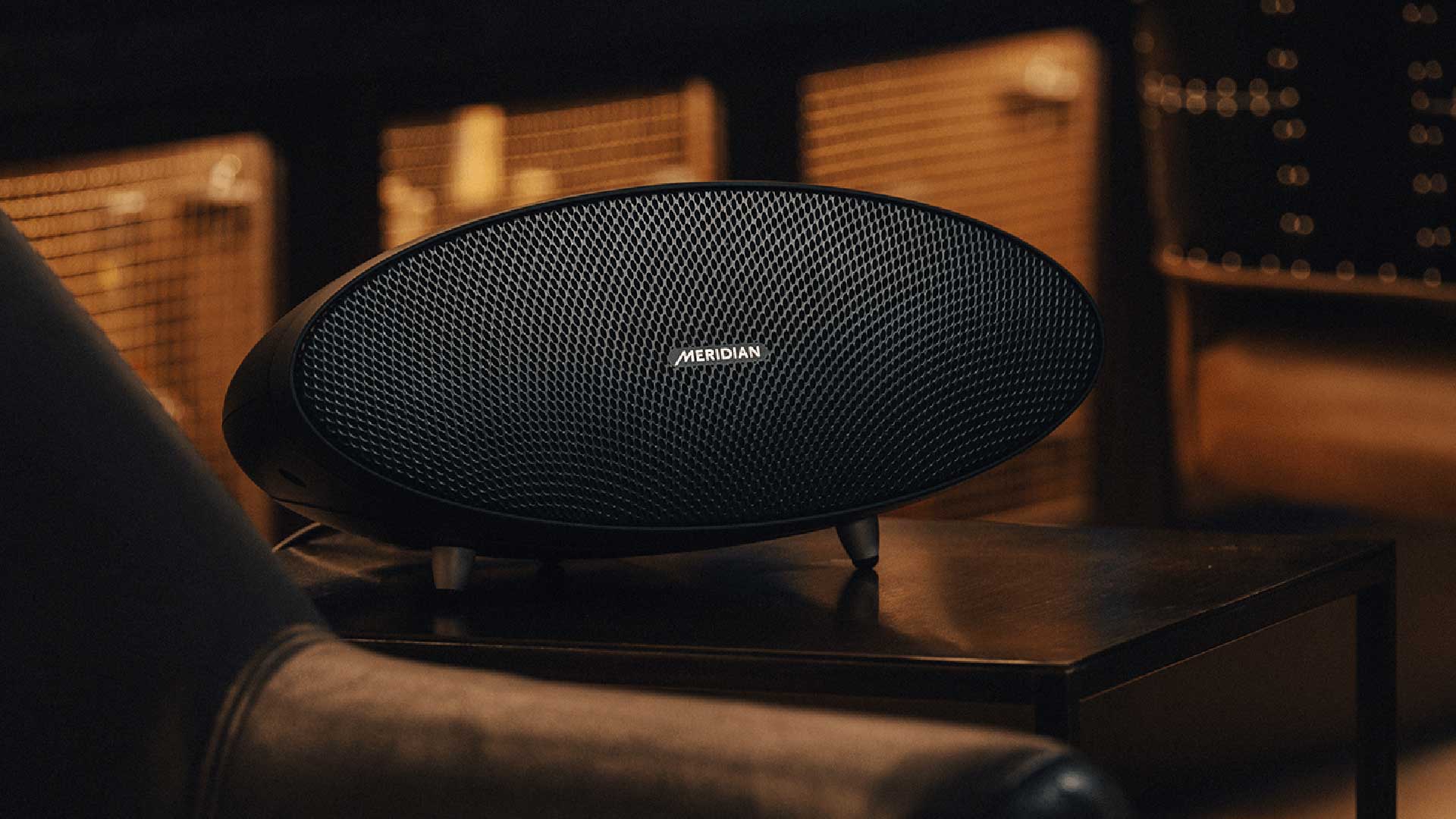
Verdict
We’ve got to be honest – this is one of the best small wireless speakers we’ve heard, probably the best of its size that money can buy, but the money required to do so does seem an awful lot, for what you get. Don’t get us wrong, the sound is great, so yes, if you’ve got money falling out of your mattress yet suffer from a real lack of bench space, or just don't want to lose your existing space to a conventional hi-fi, we’d agree this is the wireless speaker to go for – and hey, get that A$899 remote control as well.
More space? Spend the money on a proper hi-fi. Really flush? Ask about Meridian’s real digital active speakers. In a nutshell, the Ellipse is impressive for its size, especially under pressure, but very expensive, and not even Ferrari-coloured.

Jez is the Editor of Sound+Image magazine, having inhabited that role since 2006, more or less a lustrum after departing his UK homeland to adopt an additional nationality under the more favourable climes and skies of Australia. Prior to his desertion he was Editor of the UK's Stuff magazine, and before that Editor of What Hi-Fi? magazine, and before that of the erstwhile Audiophile magazine and of Electronics Today International. He makes music as well as enjoying it, is alarmingly wedded to the notion that Led Zeppelin remains the highest point of rock'n'roll yet attained, though remains willing to assess modern pretenders. He lives in a modest shack on Sydney's Northern Beaches with his Canadian wife Deanna, a rescue greyhound called Jewels, and an assortment of changing wildlife under care. If you're seeking his articles by clicking this profile, you'll see far more of them by switching to the Australian version of WHF.
